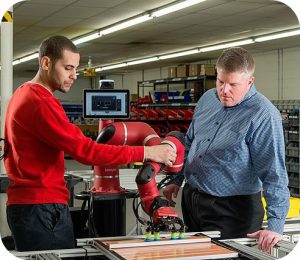 Depending on which way you look at it, the rise of automated labor in the workplace can serve as either a source of optimism or anxiety. On the pro side of the argument, robotic workers will be highly efficient and more willing to perform monotonous tasks than their human counterparts. Of course, matters of “efficiency” don’t mean much to people who could lose their jobs because of automation. And according to a new study published by the World Economic Forum, these workers are right to be concerned about their job security. Over the next four years, more than 75 million jobs could be lost as companies adopt more automation.
Depending on which way you look at it, the rise of automated labor in the workplace can serve as either a source of optimism or anxiety. On the pro side of the argument, robotic workers will be highly efficient and more willing to perform monotonous tasks than their human counterparts. Of course, matters of “efficiency” don’t mean much to people who could lose their jobs because of automation. And according to a new study published by the World Economic Forum, these workers are right to be concerned about their job security. Over the next four years, more than 75 million jobs could be lost as companies adopt more automation.
Then again, even this discouraging statistic comes with an upside: 133 million new jobs could be created during that same period. After all, most robotic workers can’t do their jobs alone. Along with supervising the performance of automated systems, humans can also work side-by-side with certain robots built for collaboration. Nevertheless, the shift from human to automated labor will certainly shake up the business world over the next four years. Currently, humans account for 71 percent of the total hours worked in major industries while machines make up just 29 percent. By 2022, though, the robots’ share of total hours worked is expected to rise to 42 percent.
So in order to adapt to this rapidly changing business environment, workers as well as companies must stay up to date with the latest skills or else risk being left behind. “To prevent an undesirable lose-lose scenario — technological change accompanied by talent shortages, mass unemployment and growing inequality — it is critical that businesses take an active role in supporting their existing workforces through reskilling and upskilling, that individuals take a proactive approach to their own lifelong learning and that governments create an enabling environment, rapidly and creatively, to assist in these efforts,” said the World Economic Forum report.
Questions:
- What are the advantages and disadvantages of automated labor?
- Why is it important for workers to stay up to date with new skills?
Source: Hamza Shaban, “Machines Will Create 58 Million More Jobs Than They Displace by 2022, World Economic Forum Says,” The Washington Post, September 18, 2018. Photo by Rethink Robotics.
